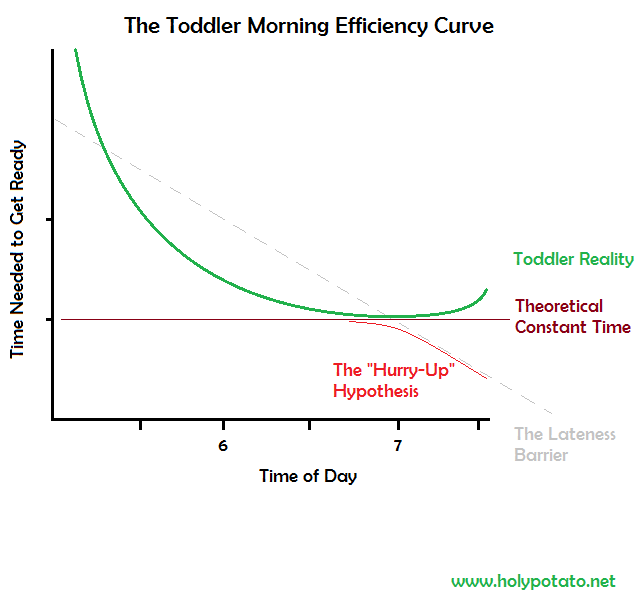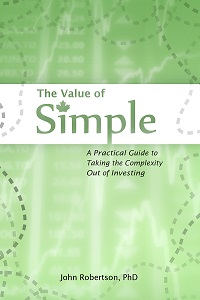VoS BtS 2: Timeline and Writing Process
March 10th, 2015 by Potato[Back to the first post in the Value of Simple self-publishing behind-the-scenes series]
The Value of Simple had a bit of a strange origin in that I didn’t originally set out to write a novel-length book, but to just update the novelette-length PSGtDIYI with some suggestions that had rolled in over the years. So the process I started out with was not ideal: I was writing in Word and tapping enter twice at the end of each paragraph, as I do when writing for the web to do block style.
For longer documents, especially books, you want to break that kind of habit, and faithfully use defined styles for your text, headings, footnotes — everything! Let the paragraph formatting take care of the space between paragraphs, because odds are you’ll want to set it for each production form factor, and going back to do it manually over 200-ish pages is a nightmare, while doing it by just updating your “normal†or “body text†style is a snap. These styles are also important because they often translate to other programs — if I were to export to InDesign, or to Calibre. Finally, they allow for lots of cool automatic things to happen, like creating tables of contents that update page numbers on their own.
So my one major tip for writing is to use those styles — create as many as you need, but no more. Other than bolding or italicizing a few words within a paragraph, all of your formatting should come through styles and page/section breaks.
I did a lot of outlining for this book, and in a few cases decided to not bother with some potential chapters while they were still at the outline stage, which limited the amount of work put into stuff that was destined to be cut anyway. The outlining also helped me see some holes in the story — which is how the project grew so quickly. Sometimes I find you just have to write and see where the story takes you, but for non-fiction I really think outlining can help.
For writing, the structure of a book like this helped a lot: I was able to chunk it into a bunch of smaller segments which I could handle in a few consecutive writing sessions — a mode of operation I was used to from blogging. I also set self-imposed deadlines, which helped me to keep pushing myself to get it done. I knew I would have to set it aside come June because of some projects at work on the horizon, with March-April being my big writing window. With a layout in place I could get a good sense of how much progress I needed to make, and whether I was staying more-or-less on track to hit my deadlines. Sure, more sections were created as the writing and reviewing progressed and holes in the story were found, but it did go pretty much as planned. Some experience from work writing reports and of course having my thesis under my belt helped a lot with self-discipline and planning. And having a deadline I didn’t want to miss for submitting to traditional publishers helped me get to just the right level of stress so I could keep pushing out drafts — knowing that I would have a review period after they got to sit so I could make it better.
Just sitting down and writing is hard enough, but there’s a lot more to go into being a self-publisher. You need to produce a high-quality finished product, which will mean bringing in people to read, critique, and improve what you’ve written — those can be friends or volunteers with an interest, or editors for hire. I owe a huge debt of gratitude to all the people who helped read early versions of the book and criticize it and make suggestions, especially the bloggers and advisors who gave up their time to make sure it was accurate.
It takes time for all of this to happen, even after the first draft is done. Below is a look at what my timeline looked like, including the false starts and set-backs. Basically it was ~3.5 months to write the first draft, a cooling-off period for your beta readers to read and your mind to go elsewhere (mine was longer but I’d say give yourself a month), then another ~3 months for revisions, packaging, registering, and publishing. I had read that it took about 6 months for publishers to respond to queries — in practice it is at least 8 months (the fastest one took that one and I still don’t have a response from the others). I’d suggest giving at least a year if you want to take a shot at submitting to a traditional publisher before your self-publishing adventure begins.
My timeline:
- Mid 2013: Decide, based on conversations with readers, to update and expand Potato’s Short Guide to DIY Investing for a 2nd edition. Begin taking notes on what I’d like to change and add, and drafting a few blog posts that will get further refined and incorporated into the book. (I end up with a massive stack of doodled-on envelopes, scraps of paper, and only a few pages of the notebook I intended to use to organize those thoughts filled out)
- Fall 2013: Get super-busy at work. Put 2nd edition on hold, with plan to take time off at xmess and write entire thing over 2-week break.
- Winter 2013: Massive ice storm, evacuate house for 10 days from power outage and burst pipe, zero writing gets done — and other tasks on the xmess to-do list have to get done in January, somehow. Postpone 2nd edition to early spring.
- February 2014: Super-busy at work for a brief period, with a big slack period following that. Use accumulated vacation to take days off (~1/week) through last two weeks of February, March, April, and May to write.
- Spring 2014: The actual writing begins in earnest. As I get going and talking with people the scope blooms, and it evolves from a 2nd edition of PSGtDIYI to a completely new book in its own right. I become a big fan of outlining during this period to keep the scope under control and to keep myself going — I decide at the outline stage which suggestions to cut (people had lots of questions they wanted answered). When writing for a day I can just pick a section from the outline to flesh out with a chapter when I had a block of time to write. I try to write for ~2 hours each afternoon while baby is napping (~3 days/week, using weekends and the day off) and another ~3 hours each evening (~6-7 days a week).
- Late April 2014: Realize that this is becoming a “book bookâ€, start talking to some published authors about the process, read up on submitting queries, borrow a copy of Writer’s Market to check on publishers’ timelines. Prepare a kind of a business plan, a detailed proposal, and an elevator pitch. Convert vague “finish by June” timeline to a more defined one to take me through to the end in May and then into the fall for self-publishing.
- Mid-May: Complete draft finished — send pitches and manuscripts to publishers and copies to external reviewers (for feedback and promotional purposes), which included bloggers and experts in finance as well as complete novices to be my beta readers.
- Summer 2014: Get ultra busy at work, the book is shelved for a time. This is good as it gives time for ideas to percolate, and for the manuscript to fade from the front of my mind so I can more critically and objectively review and edit it in the fall. Start talking with Ben (a friend and colleague who is a document design guru and artist) about hiring him to create a cover as the stark white cover with the money bunnies just aren’t going to work.
- Fall 2014: come back with fresh eyes and a big stockpile of edits and suggestions from the reviewers. The experts help point out minor errors or places where I was over simplifying, and the novices helped me understand how they approach investing after reading just this book, what was clear and what was not. Burn a few more vacation days, weekends, and late nights revising and polishing. Also finally get cover concepts back from Ben and start working to a final cover design.
- September 2014: Decide on release date: December 1, 2014. This gives what I thought would be plenty of time to do further edits, arrange for printing and background details, while also providing the traditional publishers with a 6-month window to respond before I launch into self-publishing. Register ISBN (instant), set up store front, continue with increasingly minor edits (but there are always more). I wanted to wait as long as possible before splitting the file into separate layouts for the different versions (print book, large screen PDF, small screen PDF, e-reader), so that I wouldn’t have to repeat edits across all files. Inevitably a few more changes are found and made, which takes three times as long with so many document versions. Submit cataloging-in-publication (CIP) request [note that this was not quite early enough], bookmark information on how to get into the library system. Get cover ideas from Ben, and refine to create the final cover art and layout. Research companies for printing-on-demand or small-batch printing*.
- October 2014: Start contacting second wave of reviewers (just for publicity this time around). Create InDesign files for cover (too much work for the interior — that was entirely completed with Word and Photoshop). Find incredibly annoying rights restriction on a font that won’t let me embed it into the PDF, have to change fonts. Submit files to IngramSpark, order proofs. Start thinking about the book launch party — as a birthday present my “events team†takes over the details of catering, room booking, and much of the promotion so that I can focus on my talk and not worry about logistics.
- November 2014: The 6-month mark on my submissions/queries to publishers passes with no response — self-publishing is a go! Proofs arrive, distribute as ARCs to reviewers. Have a constant debate about when to order the first print run for self-distribution sales — I don’t want to leave it too late and show up to my launch party empty handed, but I want them to be suitable for libraries by having the CIP block in them — I get seriously antsy about not having that in hand and it taking way longer than I read it should. I also want to enable distribution on IngramSpark as I’ve heard it can take up to 6 weeks for the listing to enter the Amazon and Indigo catalogs (it took less than 3). CIP finally arrives, and I finalize the files for IngramSpark to include in their distribution catalog, and order the first print run. I finalize the e-book files and upload to retailers to enable pre-sales (Amazon, Kobo, Smashwords), and open pre-sales on my own web store.
- December 2014: Launch! With some reviews up, I submit my paperwork to TPL and LPL (PEI and Alberta libraries were much less formal, I just emailed them before having external reviews, and they had copies on the shelves in December). I had some other marketing plans, but caught a nasty cough right after the launch party and spent a lot of the month in bed just hoping it went well.
Leave lots of time at the end. When I thought I was done but for “one or two little things” in September and committed to a Dec 1 release, it seemed so far away. Instead it was a fairly hectic grind to deal with last-minute edits, formatting issues, and then switching gears to start promoting. Formatting alone is like a two-day job just to smooth out all the little wrinkles — you may think that this may have gone better with InDesign for the print version, but stomping ePub bugs was a huge part of that time, which wasn’t Word’s fault (for once). I also had to go back to Photoshop to remaster a few images — some were not quite high-resolution enough for print, or were a bad multiple of pixels so they didn’t look good (an image scaled at 50% will usually look better than one scaled down 47%); others were full-colour images that did not translate well to black-and-white and had to be re-coloured (or de-coloured). A quick tip was that I did any rescaling necessary in Photoshop rather than Word.
* – Note to local print shops: you say you can produce a made-in-Canada trade paperback for me, but your websites suck and I’m too antisocial to want to come down and chat about my unique needs. How much does it cost for 10 copies? 100 copies? 1000? What are the specifications? What are the timelines? Are there set-up fees? Can people order copies on demand or do I need to manage inventory myself? Can you get it listed on Amazon/Indigo? The American print-on-demand shops and small presses are killing you here. And I probably would have paid a little more just to avoid currency fluctuations and possible cross-border shipping delays. But I could not tell at all if you were remotely competitive, and the fact that you were so secretive about your prices suggests that you’re not.



 Questrade: use QPass 356624159378948
Questrade: use QPass 356624159378948 Passiv is a tool that can connect to your Questrade account and make it easier to track and rebalance your portfolio, including the ability to make one-click trades.
Passiv is a tool that can connect to your Questrade account and make it easier to track and rebalance your portfolio, including the ability to make one-click trades.